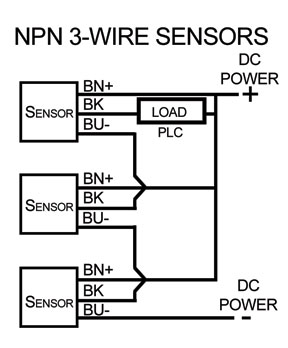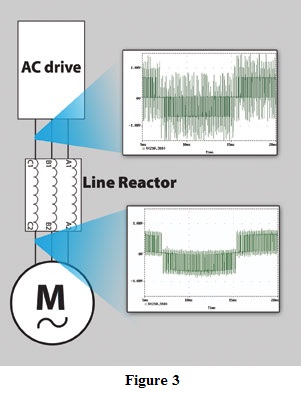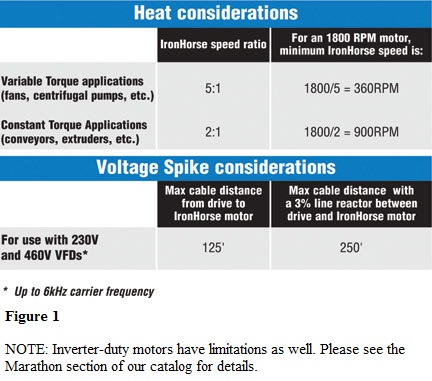FAQS
Question: Can IronHorse™ motors be used with a drive?
Answer: IronHorse™ motors can be used with drives, but there are some limitations. Depending on your application, there may be good reasons to step up to an inverter-duty motor in your application.
Question: What’s the difference between a General Purpose motor and an Inverter Duty motor?
Answer: General purpose motors have been around for many years. They are the workhorse of almost every industry. The inverter-duty motor is a much newer concept that became necessary with the advent of variable frequency drives or VFDs (sometimes called inverters or AC drives). An inverter duty motor can withstand the higher voltage spikes produced by all VFDs (amplified at longer cable lengths) and can run at very slow speeds without overheating. This performance comes at a cost: inverter-duty motors can be much more expensive than general purpose motors.
Question: When should I choose a general purpose motor?
Answer: If your application is an “across the line” motor installation, IronHorse general purpose motors are a perfect fit and a great value. But IronHorse will also work with a drive in many situations. Guidelines for choosing an IronHorse general purpose motor are given in Figure 1. If your application falls within these guidelines, there is no need to apply an inverter-duty motor.
Question: What does “across the line” mean?
Answer: “Across the line” refers to connecting a motor directly to the power source, without a drive or a soft-start circuit. Pay close attention to the ratings of contactors when specifying contactors for full-voltage starting – most contactors have a separate AC-3 rating for motor loads. Resistive loads (use AC-1 ratings) are much easier on contactors compared to heavy inductive loads (like motors). Of course, proper fusing, disconnects, and E-stop contactors should always be used for electrical and personnel safety.
Question: Why should I spend more money for an inverter-duty motor?
Answer: If you need to operate the motor at very low speeds (with a drive), or if you need full rated torque across the speed range, you might want to take a look at our inverter duty motors. Extended cable lengths between the drive and motor can also require use of an
inverter duty motor.
Question: When should I use a drive?
Answer: A drive allows the speed of a motor to be varied while running and it lessens the inrush current required when the motor is started. A vector drive can also tightly control the speed and/or torque output of the motor.
Without a drive, AC motors are operated “across-the-line” with contactors and motor starters. The electricity sent to the motor is a very clean sine wave at a fixed voltage and frequency (60Hz in the US). Noise and voltage peaks are relatively small, and reflected waves are generally not a concern. However, there are drawbacks: the motors can only run (electrically) at one speed. Speed reduction, if required, must be handled with gearboxes or other mechanical means, and there is a large inrush of electrical current (when the motor is started) that is often 5 to 6 times the normal current that the motor consumes. The speed reduction apparatus can be expensive and bulky, and inrush can wreak havoc with power systems and loading (imagine an air conditioning system in an older home: when the compressor starts, the lights dim; imagine the same circumstances with a motor the size of a small car).
Question: How does a drive control a motor?

Answer: A drive rectifies the incoming 60 Hz AC power to a DC voltage. Every drive has a DC bus that is roughly 1.4 (sqrt of 2) times the voltage level of the incoming AC line. The inverter section of the drive then “chops” this DC voltage with power transistors (IGBTs) at very high frequencies to simulate a sine wave [see Figure 2]. This “chopping” is called pulse width modulation (PWM). By converting the incoming power to DC and then performing pulse width modulation to mimic AC, the drive can vary the amplitude (volts) and frequency (Hz) of the simulated wave, which in turn varies the speed of the motor.
Question: Will a VFD cause my motor to overheat?
Answer: A VFD-driven general purpose motor can overheat if it operates at too slow a speed. Since most general purpose motors cool themselves with shaft-mounted fans, slow speeds mean less cooling. If the motor overheats, bearing and insulation life will be reduced. Therefore there are minimum speed requirements for all motors.
Question: Why do long cable lengths cause voltage spikes?

Answer: Voltage spikes occur as a result of the “pulse width modulated” output of the drive and are associated with the “rise time” of the IGBT transistors in the inverter section of the drive. IGBT transistors are used in modern drives due to their high speed switching
capability. The IGBT transistor allows for higher carrier frequencies in the drive and quieter operation of the motor as a result. As carrier frequencies rise, harmonics and the phenomena known as “reflective waves” become a concern.
Reflective waves occur due to impedance mismatches between the motor leads and the motor
winding. Mismatches are most prevalent with long motor leads and the lower impedance of smaller horsepower motors.
Reflected waves can effectively double the voltage on the motor leads and can lead to premature failure of the motor insulation.
Line reactors help by reducing the amplitude of voltage spikes from the drive and are used in situations where the motor is located at longer distances from the drive[Figure 3].
Question: What is a line reactor, and why is it so important?
Answer: Line reactors are single stage transformers that provide isolation without any change in voltage. Line reactors are used with AC drives both on the input side of the drive and also between the drive and the motor.
On the input side, line reactors help protect the drive from voltage spikes/transients and they help prevent the drive itself from inducing transients back on the power lines where they may disrupt other equipment in a factory.
On the output side (between the motor and the drive), line reactors protect the motor insulation against IGBT reflective wave damage. Output reactors also smooth the current waveform into the motor, allowing the motor to run cooler. IronHorse motors require a line reactor when used with a VFD if the cable distance between the drive and motor is more than 125 feet. You should not exceed 250 feet in cable length between an IronHorse motor and a drive.
Question: Isn’t there more than one type of drive?
Answer: Yes, the term “drive” typically refers to either a Variable Frequency Drive (VFD), also called an inverter, or a vector drive. Drives typically operate in either “scalar” (volts/hertz mode) or “vector” mode. Volts/Hz drives are the most commonly applied drives. Vector drives are more expensive but offer tighter control.
Question: What is scalar or Volts/Hertz control?
Answer: In scalar control, a VFD simply commands the motor to run at a certain speed by modulating the output frequency and RMS voltage. With no feedback mechanism, the VFD has no idea if the motor is responding correctly to that command; it just keeps humming along, blissfully ignorant even if changes in the load cause the motor to slow down or if the line voltage drops. However, in many applications these factors do not warrant the cost of a more sophisticated drive.
AutomationDirect’s GS1 and GS2 series of AC drives offer excellent Volts/Hertz capabilities at a great price. For more info about the GS1 and GS2 drives please visit: https://www.automationdirect.com/drives
Question: What is “vector” control?
Answer: Vector control is all about adjusting for changes in the load and system. A vector drive uses feedback from what is happening at the motor (measuring) to make changes in the output of the drive in order to affect the desired outcome with the motor, i.e. speed or torque accuracy.
Question: What is a flux vector drive?
Answer: In a flux vector drive, a sensor is used (an encoder mounted on the motor shaft) which provides near-absolute rotor position feedback to the microprocessors in the drive so that the exact vector algorithm of voltage and frequency can be attained. This means that no matter where the rotor is at any given moment, the VFD can adjust the output vector algorithm to produce whatever speed or torque the motor is capable of. The true test of a vector drive is holding a precise amount of torque at zero speed, i.e. supporting a hoist load when you release a holding brake. You can even use the encoder feedback to attain a rudimentary form of motion control from a flux vector VFD.
AutomationDirect’s Hitachi SJ300 line of AC drives can be configured for vector control with encoder feedback.
Question: What is sensorless vector control?
Answer: “Sensorless” or “open loop” vector is really a misnomer because with vector technology there is always a closed loop, and there are always sensors. The difference is in the location and capabilities of the sensors. In the so-called sensorless versions, the measurements are done by looking at minute effects on the output current created by what is happening in the motor to determine what to do. These effects are caused by the motor’s rotor bars passing through the magnetic fields in the stator windings and can be “seen” by very high speed digital signal processors (DSPs) in the drive. So the sensors are the Hall Effect current transducers within the VFD itself, instead of external sensors such as the encoders. The microprocessor makes the vector calculations based on a mathematical model of the motor that it creates when you first set up (tune) the system. This method can be just as accurate as using encoder feedback in 99% of applications. The one thing unattainable with a sensorless drive is that holy grail of 100% torque at zero speed, because the motor is not providing those minute current distortions when the rotor isn’t turning!
AutomationDirect’s DURApulse line of AC drives offer sensorless vector capability at a great price. For more info about DURApulse drives please visit: https://www.automationdirect.com/durapulse_drives
Question: Why do I need to tune a sensorless vector drive system?
Answer: The biggest mistake people make with a sensorless vector drive is to allow it to run on the default motor model instead of taking the time to tune the drive to the specific motor that is being used. Many VFDs now come with auto-tune features, but surprisingly few people take advantage of them. The result is performance that is barely better than a scalar drive at a higher cost.
Question: What about all those new NEC regulations? They confuse me, but I still want a safe and legal motor installation?
Answer: For a brief run-down of branch circuit and motor circuit protection please see the Circuit Protection section of our catalog.
Question: Can I run a three-phase motor on single-phase power?
Answer: No, not “across the line”, but we do offer our GS1 Drive in several single-phase models. They can control three phase motors up to ½ hp with 110VAC single phase input power, and up to 1 hp with 200-240VAC single phase input power. For more info about the GS1 drives please visit: https://www.automationdirect.com/drives
Originally Published: June 1, 2008


